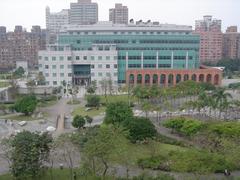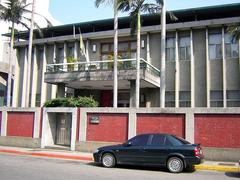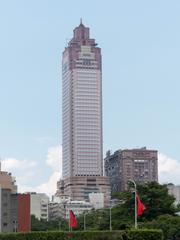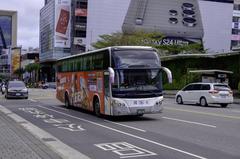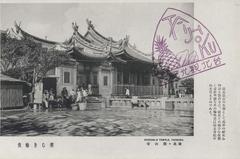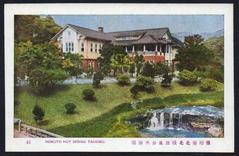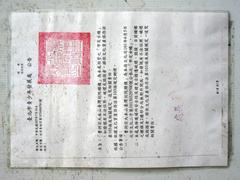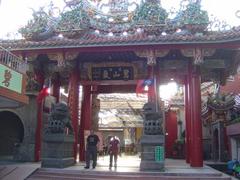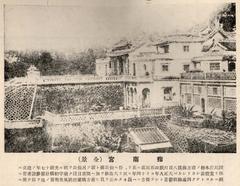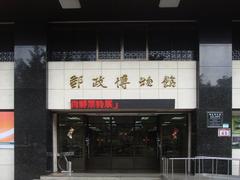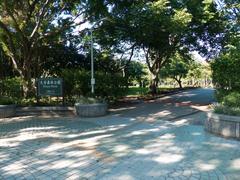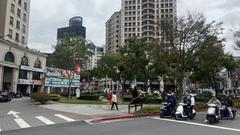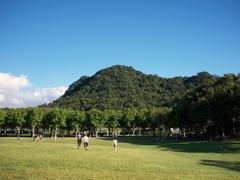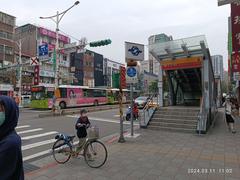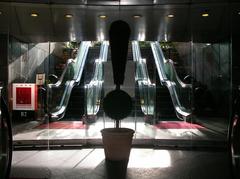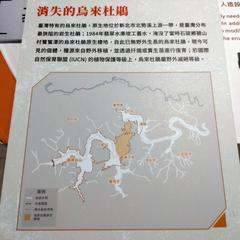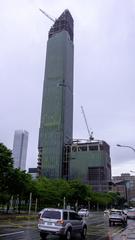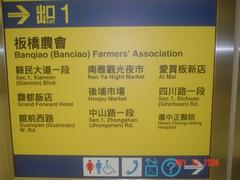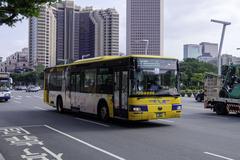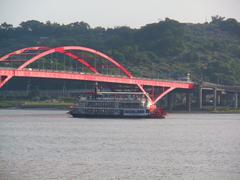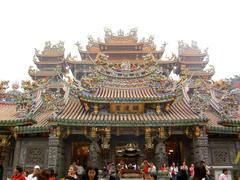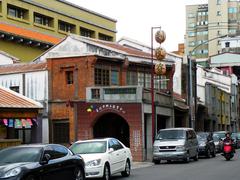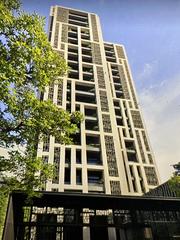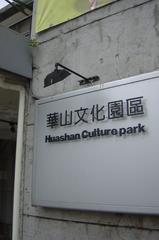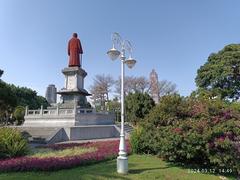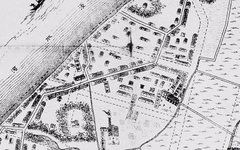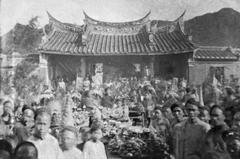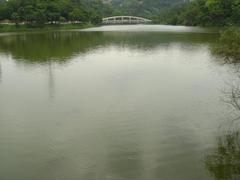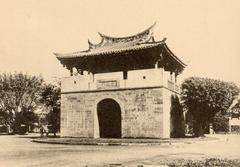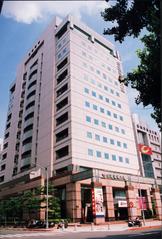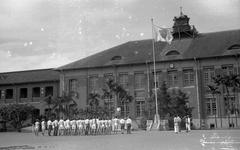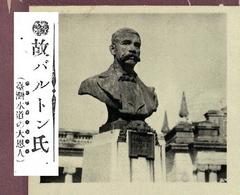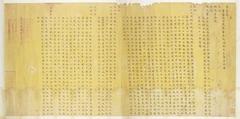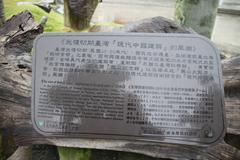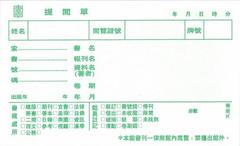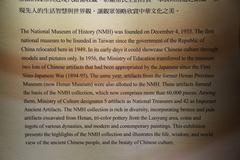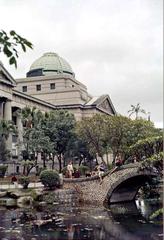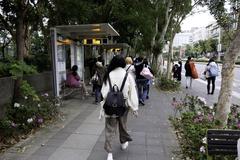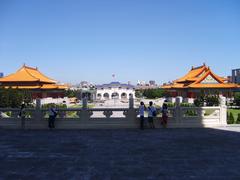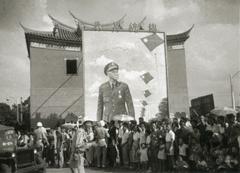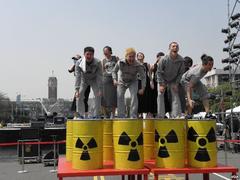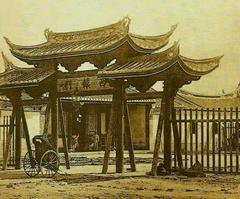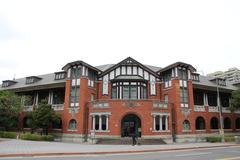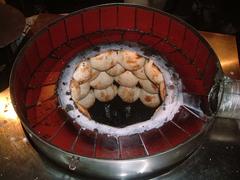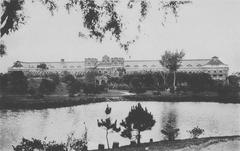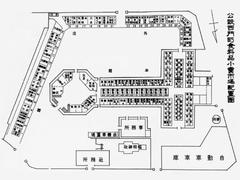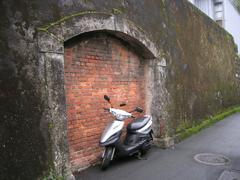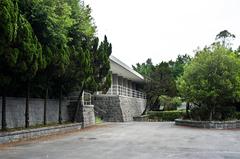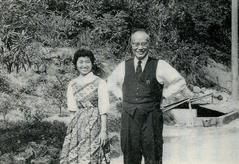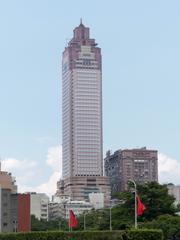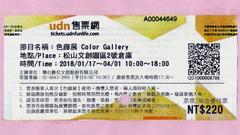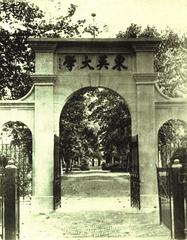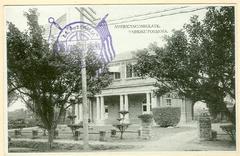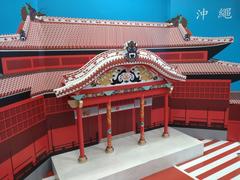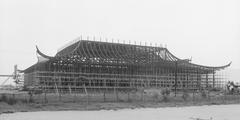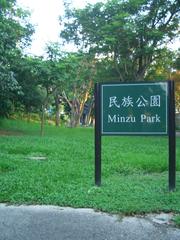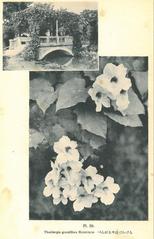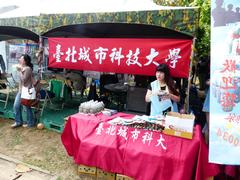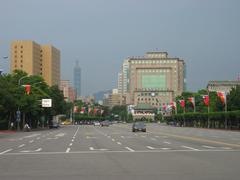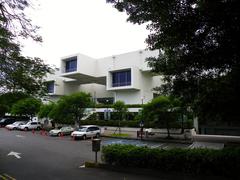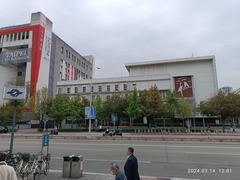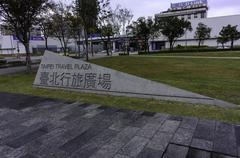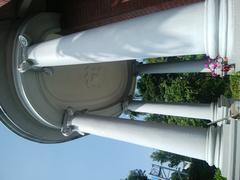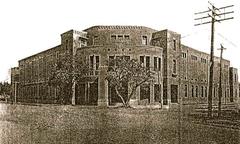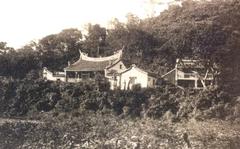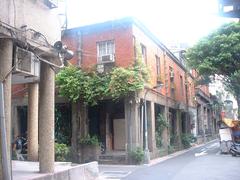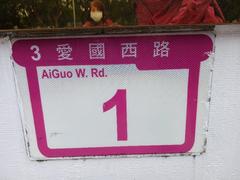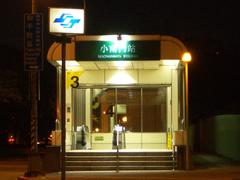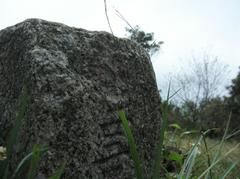Comprehensive Guide to Visiting 論劍亭, Taipei, Taiwan: History, Significance, Visitor Tips, and Everything Tourists Need to Know for a Memorable Experience
Date: 31/07/2024
Introduction
Nestled in the heart of Taipei, 論劍亭 (Lunjian Pavilion) stands as a symbol of the city’s rich historical tapestry and cultural heritage. This pavilion, an epitome of architectural beauty blending traditional Chinese and Japanese styles, offers visitors a unique glimpse into the past. Taiwan’s history is one of diverse influences, from the early Ketagalan tribes to Han Chinese settlers in the 18th century, Japanese colonial rule, and post-war modernization (Wikipedia). The Lunjian Pavilion is a testament to these multifaceted historical periods, reflecting the architectural and cultural shifts that have defined Taipei.
The pavilion’s significance is not limited to its historical value; it also serves as a vibrant cultural hub. Associated with traditional Chinese martial arts and literature, 論劍亭 remains a popular spot for both locals and tourists seeking to immerse themselves in Taipei’s cultural and historical essence. The pavilion frequently hosts traditional tea ceremonies, calligraphy exhibitions, and music performances, offering an authentic experience of Taiwanese culture.
For those planning to visit, this comprehensive guide will cover everything you need to know—from its storied past and architectural marvels to practical travel tips and nearby attractions. Whether you’re a history enthusiast, a cultural explorer, or simply looking for a serene spot to enjoy traditional architecture, 論劍亭 promises a memorable experience that captures the essence of Taipei’s historical journey.
Table of Contents
- [Explore 論劍亭: History, Visiting Hours, and Travel Tips for Taipei’s Historical Pavilion](#explore-論劍亭-history-visiting-hours-and-travel-tips-for-taipeis-historical-pavilionexplore-論劍亭-history-visiting-hours-and-travel-tips-for-taipeis-historical-pavilion)
- [Introduction](#introductionintroduction)
- [History of 論劍亭](#history-of-論劍亭history-of-論劍亭)
- [Early Settlement and Development](#early-settlement-and-developmentearly-settlement-and-development)
- [Japanese Colonial Era](#japanese-colonial-erajapanese-colonial-era)
- [Post-War Period and Modernization](#post-war-period-and-modernizationpost-war-period-and-modernization)
- [Cultural Significance](#cultural-significancecultural-significance)
- [Architectural Features](#architectural-featuresarchitectural-features)
- [Visitor Tips](#visitor-tipsvisitor-tips)
- [Best Time to Visit](#best-time-to-visitbest-time-to-visit)
- [How to Get There](#how-to-get-therehow-to-get-there)
- [Nearby Attractions](#nearby-attractionsnearby-attractions)
- [Practical Information](#practical-informationpractical-information)
- [Opening Hours](#opening-hoursopening-hours)
- [Admission Fees](#admission-feesadmission-fees)
- [Guided Tours](#guided-toursguided-tours)
- [Preservation Efforts](#preservation-effortspreservation-efforts)
- [Frequently Asked Questions (FAQ)](#frequently-asked-questions-faqfrequently-asked-questions-faq)
- [Conclusion](#conclusionconclusion)
- [References](#referencesreferences)
Explore 論劍亭: History, Visiting Hours, and Travel Tips for Taipei’s Historical Pavilion
History of 論劍亭
Early Settlement and Development
The history of 論劍亭 is deeply intertwined with Taipei’s broader historical narrative. The area now known as Taipei was originally inhabited by the Ketagalan tribes before Han Chinese settlers arrived in the early 18th century. Han settlers began populating the Taipei Basin in 1709, marking the start of recorded history in the region (Wikipedia).
Japanese Colonial Era
In 1895, Taiwan was ceded to Japan following the First Sino-Japanese War, under the Treaty of Shimonoseki. During Japanese rule, Taipei, known as Taihoku, became the political center of the Japanese Colonial Government. Significant urban development and modernization took place during this period, including the construction of many enduring buildings (Wikipedia). The architectural style of 論劍亭 reflects this Japanese influence.
Post-War Period and Modernization
After World War II, Taiwan returned to Chinese control, and Taipei became the temporary capital of the Republic of China. The post-war era was marked by rapid industrialization and urbanization, transforming Taipei’s landscape. Financial assistance from the USA in the 1950s further accelerated the city’s growth (Wikipedia).
Cultural Significance
論劍亭 is more than just a historical site; it is a cultural landmark symbolizing Taipei’s rich heritage. Associated with traditional Chinese martial arts and literature, it reflects the cultural practices and values of its time. It remains a popular spot for both locals and tourists interested in Taipei’s historical and cultural facets.
Architectural Features
The architectural design of 論劍亭 blends traditional Chinese and Japanese styles, embodying the historical influences that have shaped Taipei. The pavilion features intricate woodwork, traditional Chinese roofing, and Japanese-style gardens, making it a unique architectural landmark that offers a glimpse into Taipei’s cultural evolution.
Visitor Tips
Best Time to Visit
The best time to visit 論劍亭 is during the spring and autumn months when the weather is mild and pleasant. The pavilion is open year-round, but it can get crowded on weekends and public holidays. Early mornings and late afternoons offer a more serene experience.
How to Get There
論劍亭 is easily accessible via Taipei’s efficient MRT system. The nearest MRT station is Ximen Station, a short walk from the pavilion. Visitors can also take a taxi or use the city’s bike-sharing services.
Nearby Attractions
Visitors to 論劍亭 can also explore nearby attractions such as Longshan Temple, Huaxi Street Night Market, and the Bopiliao Historical Block. These sites offer rich cultural and historical experiences, perfect for a day of exploration in Taipei.
Practical Information
Opening Hours
論劍亭 is open daily from 9:00 AM to 6:00 PM. Check for any special events or maintenance closures before planning your visit.
Admission Fees
There is no admission fee to visit 論劍亭, making it an affordable cultural experience for all visitors.
Guided Tours
For a deeper understanding of 論劍亭’s history and significance, guided tours are available in both Mandarin and English, offering valuable insights into the pavilion’s context.
Preservation Efforts
論劍亭 is a protected historical site with ongoing preservation efforts to maintain its structural integrity and historical significance. The Taipei City Government and various cultural organizations regularly conduct maintenance and restoration work to ensure the pavilion remains a valuable cultural asset for future generations.
Frequently Asked Questions (FAQ)
Q: What are the opening hours of 論劍亭? A: 論劍亭 is open daily from 9:00 AM to 6:00 PM.
Q: Is there an admission fee for 論劍亭? A: No, there is no admission fee to visit 論劍亭.
Q: How can I get to 論劍亭? A: 論劍亭 is easily accessible via MRT, with Ximen Station being the nearest stop.
Q: Are guided tours available? A: Yes, guided tours are available in both Mandarin and English.
Conclusion
論劍亭 in Taipei is more than just a historical site; it is a cultural landmark that encapsulates the rich and diverse history of Taiwan. From its architectural elegance that blends traditional Chinese and Japanese styles to its role as a vibrant cultural hub, the pavilion offers a multifaceted experience for all visitors. The preservation efforts by the Taipei City Government and various cultural organizations ensure that this historical gem remains a valuable cultural asset for future generations.
Visitors can enjoy a serene and educational experience, enriched by guided tours available in multiple languages. The pavilion’s integration with nature, set amidst lush gardens and traditional landscaping, further adds to its charm. With easy accessibility via Taipei’s efficient public transportation system and a range of nearby attractions such as Longshan Temple and the Bopiliao Historical Block, a visit to 論劍亭 can be part of a broader cultural exploration of Taipei.
For more information on visiting Taipei and its cultural landmarks, you can explore resources such as Lilla Green’s Taipei Travel Guide and The ETLR Blog’s Taiwan Travel Guide. Stay updated with the latest information on 論劍亭 and other cultural sites by following us on social media and downloading our mobile app Audiala.
References
- Wikipedia. (2023). History of Taipei. source
- Lilla Green. (2024). Taipei Travel Guide. source
- The ETLR Blog. (2024). Taiwan Travel Guide. source
- Taiwan Obsessed. (2024). Best Time to Visit Taiwan. source
- The Broke Backpacker. (2024). Taipei Itinerary. source
- A Fun Couple. (2024). Best Things to See in Taipei, Taiwan. source
- Nick Kembel. (2024). Jiufen Old Street, Taiwan. source
- Gamin Traveler. (2024). Things to Know Before Visiting Taipei. source
